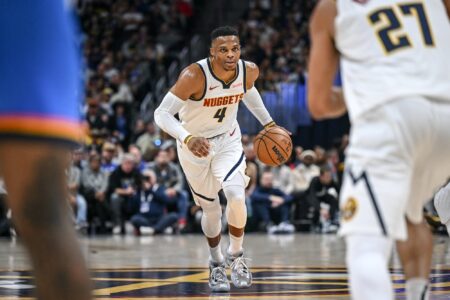Electronic Arts Inc. has finally revealed how much it will pay college athletes to appear in its highly anticipated upcoming videogame “EA Sports College Football 25.”
A total of 11,390 college-football players from 134 FBS schools will be eligible to receive $600 each for their name, image and likeness (NIL) to appear in the game, no matter if they are the star quarterback or a backup defensive lineman on their team. Players will also get a free copy of the game from EA Sports, Electronics Arts’s
EA,
sports division, the company told ESPN on Thursday.
“It’s low,” Tim Derdenger, associate professor of marketing and strategy at Carnegie Mellon University’s Tepper School of Business, told MarketWatch about EA’s payment to players for their NIL rights. “They need to be careful of this ‘one-size-fits-all, take-it-or-leave-it’ offer, or the game might fall flat.”
“Why would, let’s say, [star quarterbacks] Caleb Williams or Arch Manning sign for $600? All you’re going to do is get NIL for low-quality players that nobody cares about,” Derdenger added.
All college-football players will need to opt in to be playable in the game and receive their $600. Athletes will get an opt-in notice from EA Sports through their university email address, the company said.
See also: Why Apple’s new Sports app could be bad news for Google
EA Sports’s college-football videogame franchise, once titled “NCAA Football,” was last released in 2014. The game ended, despite its relative popularity, at least in part due to a series of legal disputes involving the NCAA, EA and college athletes, who did not receive any form of compensation for their NIL being used in the games.
The NCAA began allowing college athletes to earn name, image and likeness money in 2021 — when student-athletes finally won a decades-long argument over the fairness of receiving no remuneration for use of their NIL, even as the games they played generated millions of dollars for the institutions in which they were enrolled, with football and basketball the biggest revenue generators. Some top athletes have been able to earn millions from their NIL rights, with some even out-earning professionals in the same sport.
Quarterbacks Caleb Williams and Arch Manning are among the NCAA’s top NIL earners and have NIL values in the millions, according to On3’s proprietary NIL algorithm.
“The game is taking advantage of these star athletes at that price,” Derdenger said. “That’s the whole reason we went to NIL.”
EA did not respond to MarketWatch’s request for comment on this story.
Assuming every player opts in to receive the $600, EA would be paying a minimum of nearly $7 million to the college athletes. The company also indicated that it could execute separate NIL deals with college athletes on top of the $600 compensation for future game promotion, advertisements or as the game’s cover athlete.
The cover athlete, a highly sought-after spot on the front of physical and digital copies of the game, has not been announced yet. The last athlete to grace the cover of EA’s college-football game was University of Michigan quarterback Denard Robinson. That game sold 1.5 million copies.
“We feel very proud that we’ll be the largest program, likely the highest-spending program,” Sean O’Brien, EA Sports’s vice president of business development, told ESPN. “And really an inclusive opportunity with an equitable distribution of funds across the board.”
The news comes as EA reported an uptick in gaming demand during its earrings last month, partially due to gains in its popular “EA Sports FC” soccer-game franchise. EA also produces games including the NFL’s “Madden” franchise, “Star Wars Jedi: Survivor,” and “Apex Legends.”
Shares of Electronic Arts were up 2% Thursday in the afternoon session, and are up 30.1% over the last 12 months.
Read on: “Did NIL play a part in Alabama coach Nick Saban’s shock retirement?”
Read the full article here












